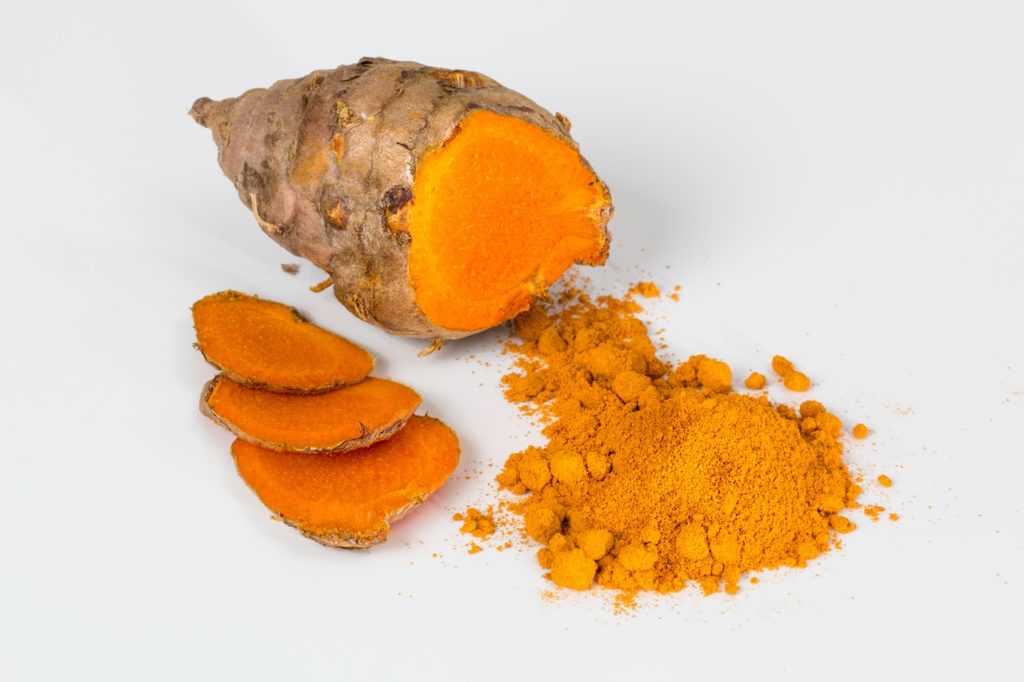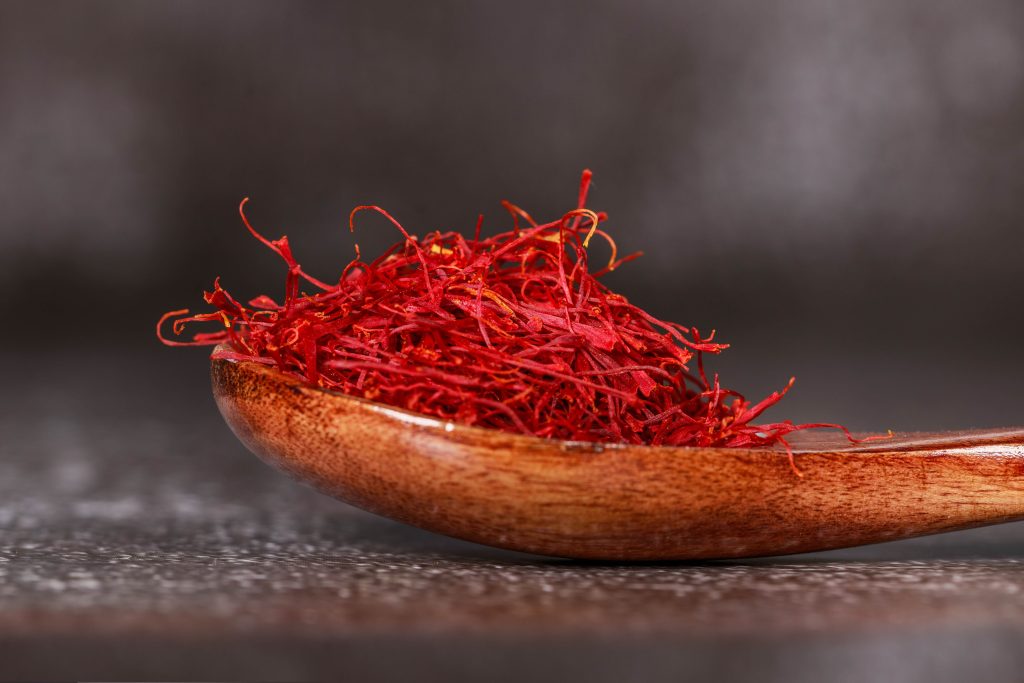What is turmeric?
Turmeric (Curcuma longa), a yellow pigmented spice, that is used worldwide in cooking, cosmetics, dyes, and medicines. It cultivated in Nepal, India and other parts of Southeast Asia. In Nepal, its commonly called as ‘Besar’ or ‘haldi’ and used as a spice especially in cooked vegetables and curries which improves color and flavor of such foods.
Turmeric has long history of medicinal use dating back nearly 4000 years. It is used in Ayurveda and many southeastern alternative medicines to treat a variety of disease conditions in both animals and humans. Vertigo, sprains, cuts, injuries, swellings, skin infections, insect/scorpio/snake bites, acne, and diabetic sores are all treated with turmeric paste applied topically. Turmeric has long been used and reported to help with sore throats, common cold, flatulence, indigestion, diarrhea, biliary and hepatic problems, and anorexia when taken orally. It is also used as antiseptic, antimicrobial, antiallergic and anti-inflammatory agent in many other conditions.
If you are a Nepali or Indian, you probably have had turmeric drink when you had sore throat and common cold. Is not it?
So, what is so fascinating about turmeric?
Turmeric consists of a group of three curcuminoids which constituents 3-6% of it along with other components. The benefits of turmeric are due to its functional ingredient curcumin which is a polyphenolic compound (a phytonutrient). The benefits of curcumin are associated with its anti-inflammatory and antioxidant capacities. Curcuminoids have been recognized by the US Food and Drug Administration (FDA) as safe and tolerable substances, even at doses of between 4000 and 8000 mg per day.
Quick facts
India is the largest producer of Turmeric.
As curcumin is a poorly water-soluble, it is poorly utilized by body. To improve its bioavailability, combined use of turmeric and pepper is recommended. A substance found called piperine found in black pepper and long pepper, are known to increase its intestinal absorption by up to 20 times.
Benefits of Turmeric
- Helps to treat arthritis
Numerous researches have demonstrated the anti-arthritic effects of curcumin in humans with osteoarthritis and rheumatoid arthritis. A systematic review and meta-analysis conducted in 2016 provided scientific evidence that 8–12 weeks of standardized turmeric extracts (typically 1000 mg/day of curcumin) treatment can reduce pain and inflammation-related symptoms of arthritis and result in similar improvements of the symptoms as ibuprofen and diclofenac sodium. This also suggests that curcumin may offer an alternative to NSAIDS for patients with osteoarthritis seeking treatment with lesser side effects in gastrointestinal tract and cardiovascular system (1). Thus, turmeric extracts and curcumin are recommended for alleviating the symptoms of arthritis, especially osteoarthritis.
- Helps with cardiovascular diseases
Curcumin is reported to inhibit oxidative stress, cell death and inflammation and show cardioprotective effects. It has also been determined that serum triglyceride, LDL and VLDL cholesterol levels decrease considerably by taking curcumin (2). In one study of 121 people undergoing coronary artery bypass surgery, researchers appointed them either a placebo or 4 grams of curcumin per day a few days before and after the surgery. The curcumin group had a 65% reduced risk of experiencing a heart attack in the hospital (3).
- May prevent and help treating cancer
Cancer involves abnormal cell growth with the capability to invade or spread to other parts of the body. Studies have shown the antitumor effects of turmeric against ovarian cancer, uterine cancer, cervical cancer, and prostate cancer. Curcumin is reported to reduce cancer cell growth and their spreading and contribute to death of cancer cells (2).
- Helps with metabolic diseases
Metabolic syndrome includes insulin resistance, high blood sugar level, high blood pressure, low high-density lipoprotein cholesterol, elevated low-density lipoprotein cholesterol, elevated triglyceride levels, and obesity, especially visceral obesity. Numerous studies have shown beneficial effects of curcumin in several aspects of metabolic syndrome by improving insulin sensitivity, reducing elevated blood pressure, inflammation, and oxidative stress (4).
- Aids in gut health and digestive system
Curcumin has beneficial effects on gut microbiota. Gut microbiota is a hugely complex ecology of organisms, primarily comprising many classes of bacteria, fungi, viruses, and a few other species. In simple words, our intestine has thousands of both harmful and beneficial microorganisms. Curcumin is known to favor the growth of beneficial bacteria strains in the gut modulating microbial richness, diversity, and composition. If our gut microbiota is healthy, our overall digestion and metabolic health is more likely to be healthy. It has long been used in ayurvedic medicine as a digestive healing agent as well.
The anti-inflammatory properties and beneficial effects of curcumin have been demonstrated for inflammatory bowel diseases and other gastrointestinal conditions, including dyspepsia, Helicobacter pylori infection, peptic ulcer, and irritable bowel syndrome (2).
Besides above-mentioned benefits, turmeric is known to have positive role to fight against depression, anxiety, several neurological diseases, AIDS and so on. It may also help in the management of exercise-induced inflammation and muscle soreness, thus enhancing recovery and subsequent performance in active people. Thus, having low level of turmeric daily exerts potential health benefits in healthy individuals.
Potential Toxicity
Consumption of turmeric and curcumin is safe and well-tolerated in general. Dosages of curcumin as high as 8000 mg/day have been shown to be well-tolerated with no apparent toxicity when taken orally for 3 months (5,6). According to JECFA (The Joint United Nations and World Health Organization Expert Committee on Food Additives) and EFSA (European Food Safety Authority) reports, the Allowable Daily Intake (ADI) value of curcumin is 0–3 mg/kg body weight. Though its usually safe, too much (probably more than a teaspoon per day) of turmeric as a part of daily diet may upset our stomach and cause constipation and vomiting in some people. It is not advised to have more than a teaspoon of turmeric during pregnancy. Higher doses may also interfere with iron absorption. Turmeric does not just contain curcumin but other minerals and compounds as well. Turmeric is high in soluble oxalates, which can bind to calcium, and form insoluble calcium oxalate, which is responsible for about three-quarters of all kidney stones (1). This may also worsen conditions such as kidney stones and gall bladder problems if taken in large amount.
Takeaway
Turmeric, mainly its bioactive compound called curcumin is a potent anti-inflammatory and antioxidant agent. In daily life, using small amounts of turmeric with its bioavailability enhancer is beneficial. Add black pepper to the any turmeric drink you are making. Curcumin is also fat soluble, so taking turmeric or curcumin with a drink or meal high in fat may help improve its bioavailability. Adding turmeric to the curries as traditional Nepali cooking style is safe and might be beneficial on a current level. Though there is no exact consensus (most of them are about curcumin), having up to 1 teaspoon of turmeric per day is generally safe for healthy people and may have potential benefits as well.
- Daily JW, Yang M, Park S. Efficacy of Turmeric Extracts and Curcumin for Alleviating the Symptoms of Joint Arthritis: A Systematic Review and Meta-Analysis of Randomized Clinical Trials [Internet]. Vol. 19, Journal of Medicinal Food. Mary Ann Liebert Inc.; 2016 [cited 2021 Jun 20]. p. 717–29. Available from: /pmc/articles/PMC5003001/
- Hay E, Lucariello A, Contieri M, Esposito T, de Luca A, Guerra G, et al. Therapeutic effects of turmeric in several diseases: An overview. Vol. 310, Chemico-Biological Interactions. Elsevier Ireland Ltd; 2019. p. 108729.
- Wongcharoen W, Jai-Aue S, Phrommintikul A, Nawarawong W, Woragidpoonpol S, Tepsuwan T, et al. Effects of curcuminoids on frequency of acute myocardial infarction after coronary artery bypass grafting. American Journal of Cardiology [Internet]. 2012 Jul 1 [cited 2021 Jun 20];110(1):40–4. Available from: https://pubmed.ncbi.nlm.nih.gov/22481014/
- Hewlings S, Kalman D. Curcumin: A Review of Its Effects on Human Health. Foods [Internet]. 2017 Oct 22 [cited 2021 Jun 20];6(10):92. Available from: /pmc/articles/PMC5664031/
- Qin S, Huang L, Gong J, Shen S, Huang J, Ren H, et al. Efficacy and safety of turmeric and curcumin in lowering blood lipid levels in patients with cardiovascular risk factors: A meta-analysis of randomized controlled trials [Internet]. Vol. 16, Nutrition Journal. BioMed Central Ltd.; 2017 [cited 2021 Jun 20]. p. 1–10. Available from: https://nutritionj.biomedcentral.com/articles/10.1186/s12937-017-0293-y
- Phase I clinical trial of curcumin, a chemopreventive agent, in patients with high-risk or pre-malignant lesions – PubMed [Internet]. [cited 2021 Jun 20]. Available from: https://pubmed.ncbi.nlm.nih.gov/11712783/



